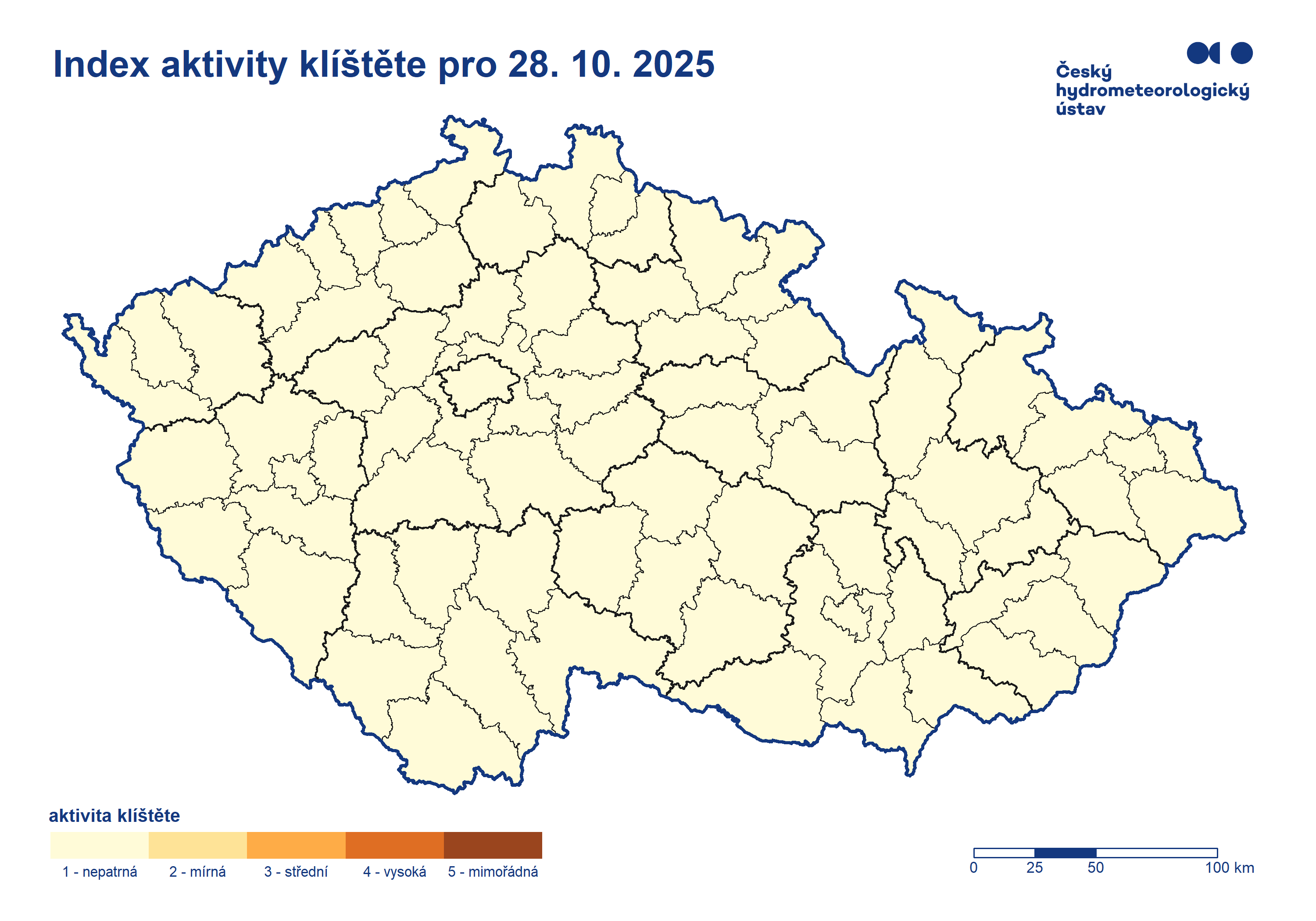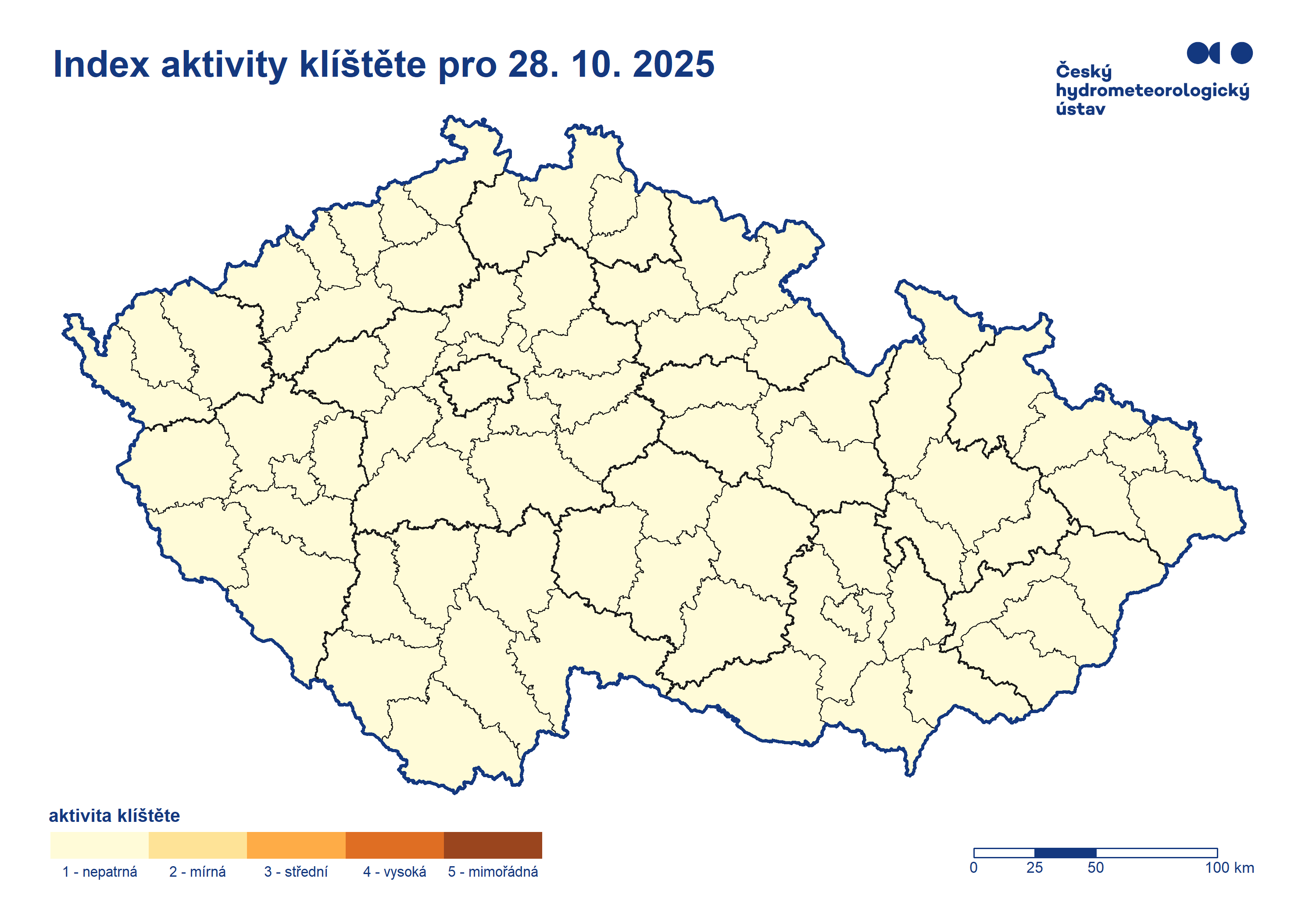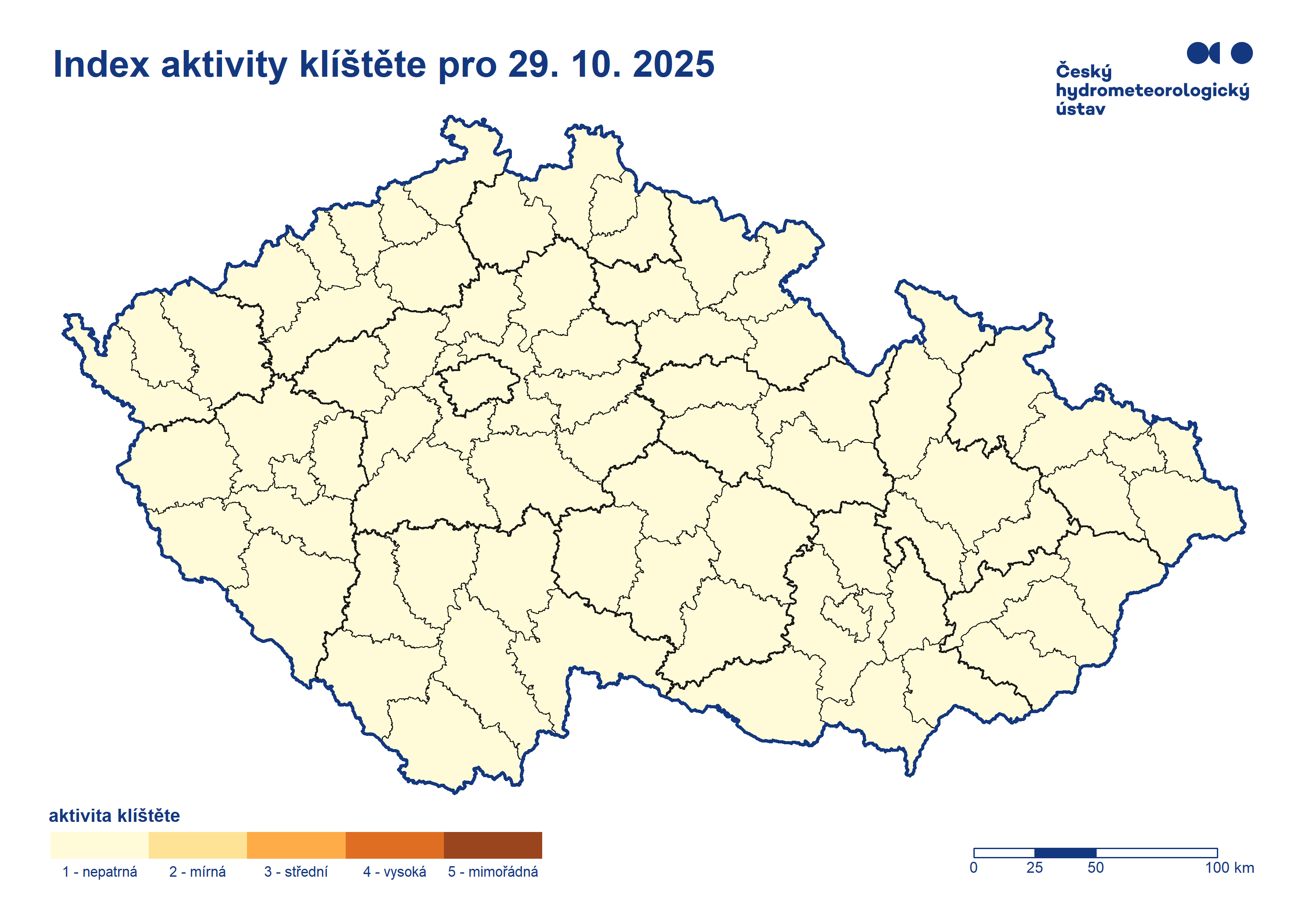Forecast of the activity of the common castor bean tick (Ixodes ricinus) in the Czech Republic
The forecast is issued by the Czech Hydrometeorological Institute every Monday and Thursday in cooperation with the National Institute of Public Health and with the support of the Ministry of Health of the Czech Republic. The higher the level of activity, the higher the risk of a person or animal being attacked by a tick, and if infected, the higher the probability of contracting one of the infectious diseases transmitted by ticks. This risk is expressed in ten levels supplemented with recommendations on how to behave in the predicted situation when visiting places with the expected occurrence of ticks.
Forecast
Forecast on ČHMÚ
The forecast is provided from April to October, however, the specific start and end dates depend on the current weather and can therefore be postponed to March or November. In the remaining part of the year, the possibility of tick infestation cannot be ruled out, but the risk is minimal, zero during periods of snow cover or all-day frost.
The term "tick activity" can be simply described as the proportion of ticks that are ready to attack the host to the total tick population in a given location. This means that the greater the number of such "active" ticks, the higher the level of risk presented.
The typical habitat of ticks is deciduous and mixed forests and shrubbery with a herbaceous layer, especially their edges, as well as vegetation on the edges of watercourses. Ticks are often found in parks, gardens and unmaintained pastures. There are significantly fewer of them in coniferous forests, especially if they are without undergrowth, and in rocky environments with minimal vegetation. They do not occur in agricultural crops. Due to their specific requirements for environmental humidity, ticks are not found in open, sunny dry places, as well as in peat bogs and permanently waterlogged terrain. Although the size of the tick population decreases with altitude, in our territory its occurrence has been recorded in recent decades even in mountainous areas up to the upper forest border.
Activity levels
-
Level 1 and 2 – low risk
Recommendation: When visiting deciduous and mixed forests and shrubs with herbaceous vegetation, choose clothing made of smooth, light-colored fabric and occasionally inspect, especially trousers, and remove any ticks that may be attached (the same applies to other levels of risk). Body inspection in the evening and morning, and tick removal if necessary.
-
Level 3 and 4 – moderate risk
Recommendation: Use repellent, do not sit or lie down in vegetation. Check the body in the evening and morning, and remove ticks if necessary.
-
Level 5 and 6 – medium risk
Recommendation: Use repellent, do not sit or lie in vegetation, do not enter bushes. Check the body in the evening and morning, and remove ticks if necessary.
-
Level 7 and 8 – big risk
Recommendation: Use repellent, do not sit or lie in vegetation, do not enter bushes and herbaceous vegetation, especially at the edge of the forest, at the edge of watercourses and deciduous thickets. Check the body in the evening and morning, and remove ticks if necessary.
-
Level 9 and 10 – high risk
Recommendation: Use repellent. Do not enter deciduous and mixed forests freely, move only on paved paths. Inspect the body in the evening and morning, and remove ticks if necessary.


